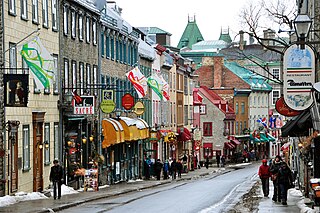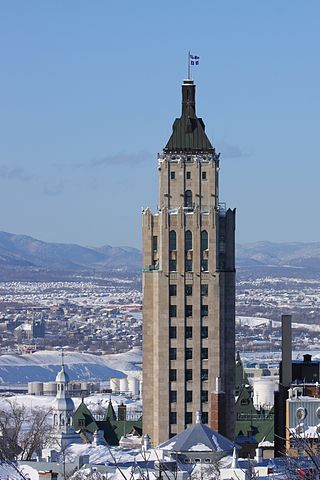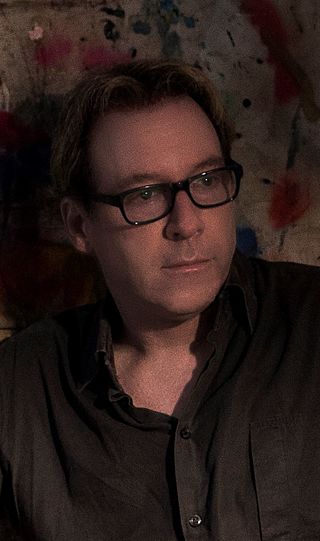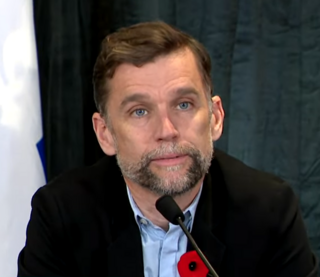
Quebec City is the capital city of the Canadian province of Quebec. As of July 2021, the city had a population of 549,459, and the metropolitan area had a population of 839,311. It is the twelfth-largest city and the seventh-largest metropolitan area in Canada. It is also the second-largest city in the province, after Montreal. It has a humid continental climate with warm summers coupled with cold and snowy winters.

Boucherville is a city in the Montérégie region in Quebec, Canada. It is a suburb of Montreal on the South shore of the Saint Lawrence River.

The Quebec Winter Carnival, commonly known in both English and French as Carnaval, is a pre-Lenten festival held in Quebec City, Quebec, Canada. After being held intermittently since 1894, the Carnaval de Québec has been celebrated annually since 1955. That year, Bonhomme Carnaval, the mascot of the festival, made his first appearance. Up to one million people attended the Carnaval de Québec in 2006, making it, at the time, the largest winter festival in the world. It is, however, the largest winter festival in the Western Hemisphere.

Longueuil station, officially Longueuil–Université-de-Sherbrooke station, is a Montreal Metro station in Longueuil, Quebec, Canada. It is operated by the Société de transport de Montréal (STM) and is the southern terminus of the Yellow Line. It is connected to a campus of Université de Sherbrooke, as well as the largest bus station in Greater Montreal, Terminus Longueuil.

The Parliament Building of Quebec is an eight-floor structure and is home to the National Assembly of Quebec, in Quebec City, Quebec, Canada. The Parliament Building was designed by architect Eugène-Étienne Taché in a Second Empire style and built between 1877 and 1886, in the heart of Quebec's Parliament Hill. The National Assembly first met there on March 27, 1884, even though the building was only fully completed two years later, on April 8, 1886. From the 1910s to the 1930s, the government built several adjacent buildings to expand its office spaces, creating a parliamentary complex, of which the Parliament Building is the main edifice. This structure is a successor of several earlier buildings, the earliest of which was built in 1620 and among which there were two other parliament houses that served as legislatures.

The Édifice Price is an 18-floor skyscraper in Quebec City, Quebec, Canada. Built in 1928–1930 amid controversy for Price Brothers Limited, it is the tallest building in the Old Quebec historical district, as well as one of the oldest skyscrapers in Canada. The building is the property of Ivanhoé Cambridge, a subsidiary of the Caisse de dépôt et placement du Québec. A memorial is attached to the building. In 2001, it became the location of an official residence for the Premier of Quebec, which occupies two of the upper floors.

The coat of arms Quebec city is the heraldic symbol representing the city of Quebec City.

Pierre Curzi is an actor, screenwriter and politician in Quebec. He is a former Member of the National Assembly of Quebec (MNA) for the riding of Borduas in the Montérégie region south of Montreal. Elected under the Parti Québécois (PQ) banner, he later sat as an independent.

Céline sur les Plaines is the ninth home video by Canadian singer Celine Dion, released on DVD in Canada by Productions J on 11 November 2008. Entitled Live à Quebec, it was also issued in France, Belgium and Switzerland by TF1 Video on 20 May 2009. The DVD includes Dion's historic concert in Quebec City in front of 250,000 spectators, which took place on the Plains of Abraham on 22 August 2008 in celebration of the city's 400th anniversary. The release was commercially successful reaching number one on the charts in Canada, France and Belgium, and number two in Switzerland. In 2009, Céline sur les Plaines received a Félix Award for the DVD of the Year.
Marianna O'Gallagher, was a Canadian historian from Quebec City. A former member of the Sisters of Charity of Halifax, she wrote extensively on the history of the Irish in Quebec City, was involved in the creation of Grosse Isle National Historic Site and the revival of the Quebec City Saint Patrick's Day celebrations.
Cassiopée is a francophone Canadian singer and entertainer. Since 2011, she has played the lead female character Lia in Cirque du Soleil show, Zarkana. She also plays three of the four other female parts in the production.
Les Chemins invisibles was a seasonal outdoor show created by Cirque du Soleil that was performed during the summer street events in Quebec City's Saint-Roch district. In 2009, Cirque signed a contract for CA$34,400,000 with the city of Quebec to produce five years of performances during the summer months from 2009 to 2013. The first installment was performed during the summer of 2009. Admission is free and open to the public; the show is presented 5 nights a week for a total of around 50 shows each summer. The show is about three tribes from separate cultures that meet to share one another's experiences. Les Chemins invisibles follows the success of the special show 400e anniversaire de Quebec, which was presented in 2008 for the 400-year anniversary of the city.

Michel Pleau is a Canadian poet, who was appointed Canadian Parliamentary Poet Laureate in January 2014.
Michel Lemieux is a Canadian multimedia artist from Quebec, whose career has incorporated work in theatrical design, installation art, film, video, dance and music. First coming to prominence in the early 1980s as a performance artist whose work explored the integration of new media technologies into experimental pop music in a manner similar to Peter Gabriel and Laurie Anderson, more recently he has concentrated primarily on creating, designing, directing and producing multimedia theatrical presentations for events, theatrical companies and other artists.

Jean Gaudreau is a Canadian artist, painter, and engraver.
Forever Quebec is a Canadian documentary film, directed by Jean-Claude Labrecque and released in 2008. The film is a portrait of life in Quebec City, made as part of the city's 400th anniversary celebrations that year.

Marcel Sabourin, OC is a Canadian actor and writer from Quebec. He is most noted for his role as Abel Gagné, the central character in Jean Pierre Lefebvre's trilogy of Don't Let It Kill You , The Old Country Where Rimbaud Died and Now or Never , and his performance as Professor Mandibule in the children's television series Les Croquignoles and La ribouldingue.

Bruno Marchand is a Canadian politician who currently serves as mayor of Quebec City, Quebec, succeeding Régis Labeaume in the 2021 Quebec City municipal election.

Julie Dufour is a Canadian politician. She has served as the mayor of Saguenay, Quebec since 2021.





















